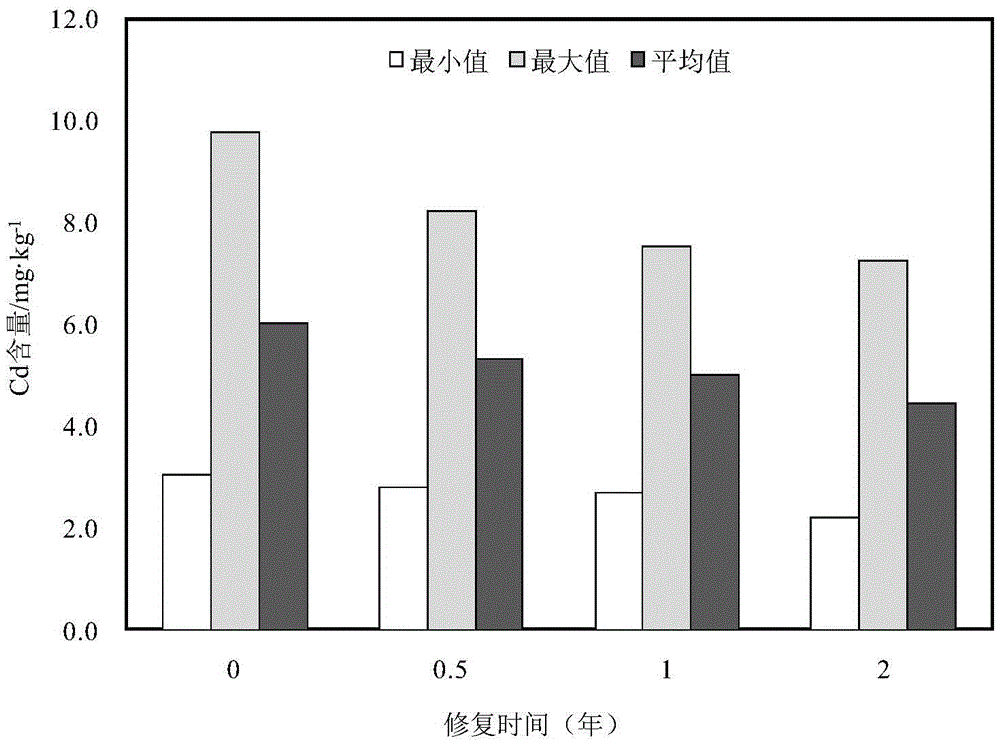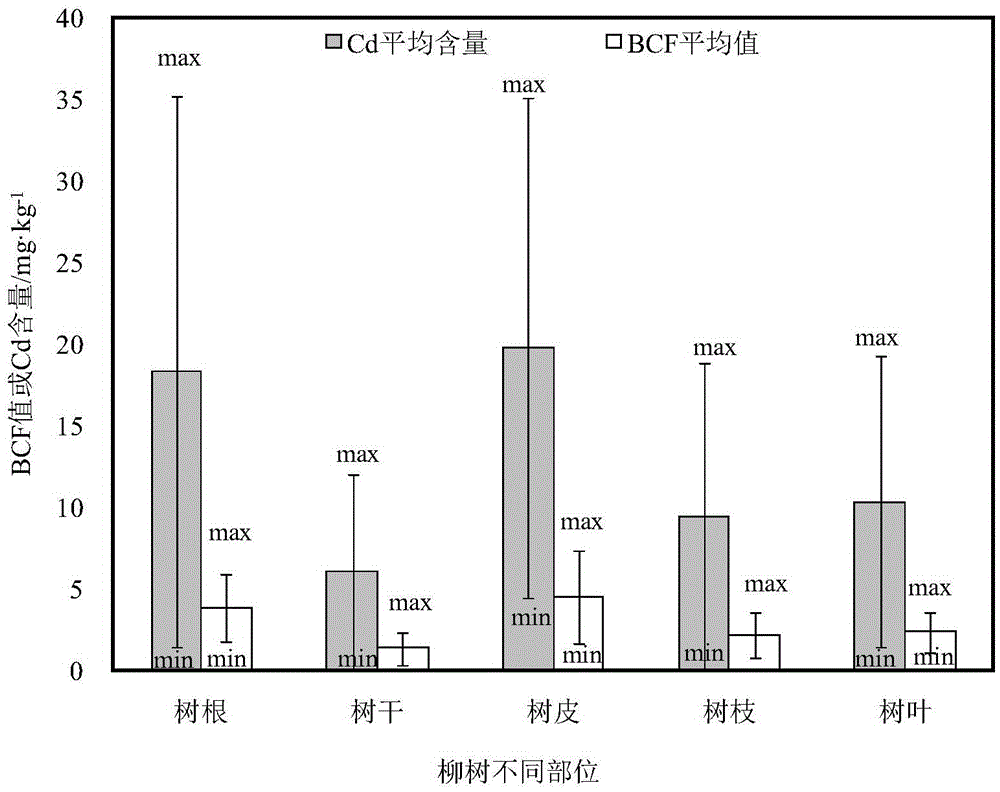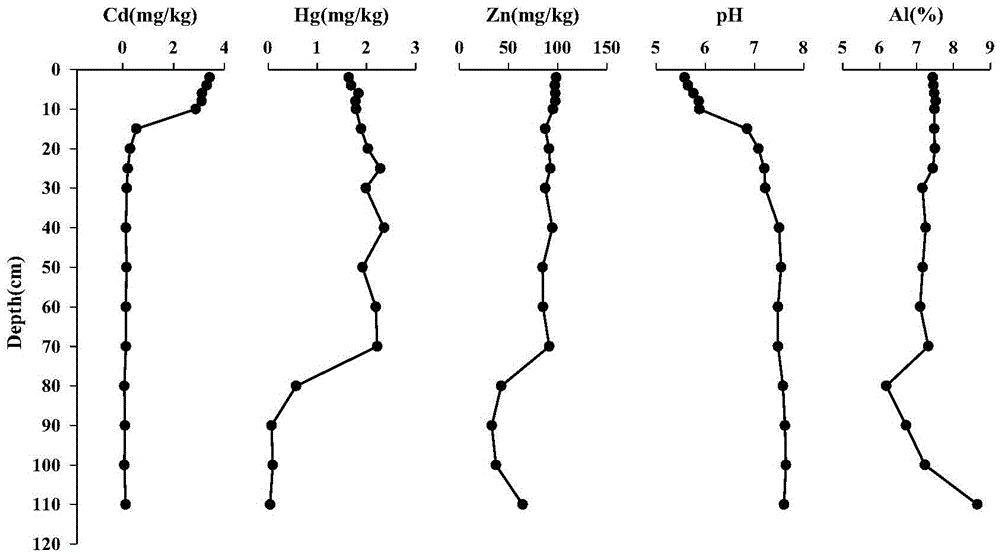Practical method for farmland soil cadmium pollution remediationby planting Salix jiangsuensis J795
A cadmium pollution and farmland technology, applied in the restoration of polluted soil and other directions, to achieve the effect of straight trunks and deep ornamentation
- Summary
- Abstract
- Description
- Claims
- Application Information
AI Technical Summary
Problems solved by technology
Method used
Image
Examples
Embodiment 1
[0042] Potted Suliu 795 experiment on Cd-contaminated farmland soil:
[0043] From the clues of soil heavy metal pollution found in the previous ecological geochemical survey and evaluation of Jiangsu Province, 5 representative farmlands seriously polluted by heavy metals such as Cd were selected. =5.6—6.5. Retrieve 1000kg of soil from the farmland (200kg from each piece of polluted farmland), and divide it into 10 ceramic pots, the height of the pot is 60 cm, the diameter of the pot mouth is greater than 60 cm, the soil in each pot is greater than 60 kg, and the thickness of the soil in the pot is greater than or equal to 50cm. Finely crush the soil in the pot, remove impurities (grass, sand, stones, etc.), smooth it, lightly compact it, and wet water, and then insert willow branches before Qingming Festival, and insert 3 willows in each pot at equal intervals. Each pot is guaranteed to survive at least one tree, and the branches of Suliu 795 variety planted are purchased a...
Embodiment 2
[0047] Selecting typical Cd severely polluted farmland and planting 795 branches of Suliu 795
[0048] A typical area was selected from the previously discovered cadmium-contaminated farmland in Jiangsu Province to carry out a field restoration experiment planted with branches of Suliu 795. The test site is located 100 meters west of a battery factory in Ehu Town, Xishan District, Wuxi City. It covers an area of 2.4 mu. It consists of an independent wheat field, which is about 80 meters long from east to west and 20 meters wide from north to south. 3.2 mg / kg, soil pH = 5.6, heavy metal pollutants such as Cd are mainly concentrated in the soil at a depth of 20 cm above the surface, but the depth of Hg pollution extends below 50 cm. The evaluation of the soil sediment column also found that the soil in the test site has some acidification and surface Soil Zn is slightly enriched (see image 3 shown). The north side of the test site is an orchard (vineyard), the west side is ...
Embodiment 3
[0053] Comparison of Cd remediation effects of different woody plants absorbing farmland soil
[0054] Next to the site where the above-mentioned embodiment 2 carried out the field test, a small piece of blank land was used to carry out a comparative test of planting Suliu 795, weeping willow and other ornamental seedlings. Uniformity continues to be verified, but there are significant differences in the ability of different plants to absorb soil Cd. Taking the leaves of a plant growing for one year as an example, the leaves of Suliu 795 have the strongest ability to absorb soil Cd, followed by Suliu 172, weeping willow and red maple , Magnolia and other plant leaves basically do not absorb excess Cd in the soil. See the table below (Table 1) for the comparison of test results of leaves of different plants including Suliu 795 absorbing soil Cd.
[0055] Table 1 Analysis results of Cd content (mg / kg) in leaves and soil samples of Suliu 795 and other related ornamental seedling...
PUM
 Login to View More
Login to View More Abstract
Description
Claims
Application Information
 Login to View More
Login to View More - R&D
- Intellectual Property
- Life Sciences
- Materials
- Tech Scout
- Unparalleled Data Quality
- Higher Quality Content
- 60% Fewer Hallucinations
Browse by: Latest US Patents, China's latest patents, Technical Efficacy Thesaurus, Application Domain, Technology Topic, Popular Technical Reports.
© 2025 PatSnap. All rights reserved.Legal|Privacy policy|Modern Slavery Act Transparency Statement|Sitemap|About US| Contact US: help@patsnap.com



